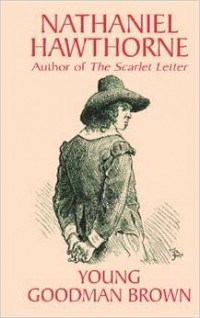



Although, that may be the theme of the story, there is no controversy it that, it is widely agreed upon. But, since the reader decides it leads to many interpretations, somehow each of those take away common themes: everyone is corruptible, therefore becoming capable of evil and deceit that is unexpected. It is all the readers’ interpretation of whether the witches’ Sabbath was a real occurrence of a figment of Brown’s imagination. The whole story of “Young Goodman Brown” “hovers on the borderline between the subjective and objective reality derived from Hawthorne’s suggestion that Brown’s experience is peculiar to him and yet broadly representative,” (Levy 376). “Young Goodman Brown” unfolds by showing Goodman Brown, Faith, and the Old Man and the conflicts they go through, which leads to the climax where the themes about deceit and corruption are revealed. There appears to be also many instances in which symbols that portray the struggle of good versus evil, Hawthorne suggests that evil will take control. All the main characters are deceiving to Goodman Brown, and he sees they are corrupt. The Dark Romanticism story develops by Goodman Brown gradually giving into evil through the corruption of his wife, Faith, and his encounter with the devil. The short story entitled “Young Goodman Brown” by author Nathaniel Hawthorne suggests that everyone is corruptible.


 0 kommentar(er)
0 kommentar(er)
